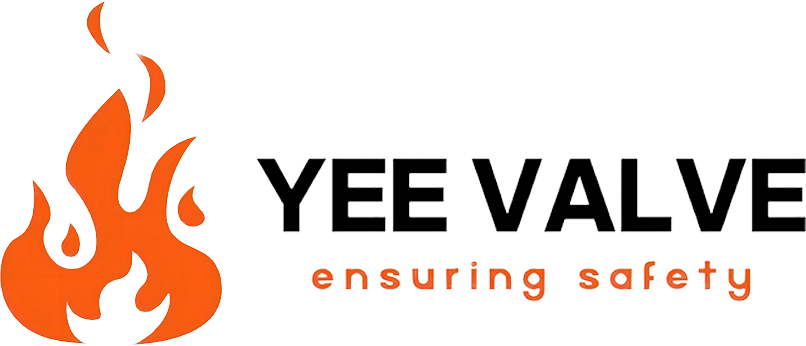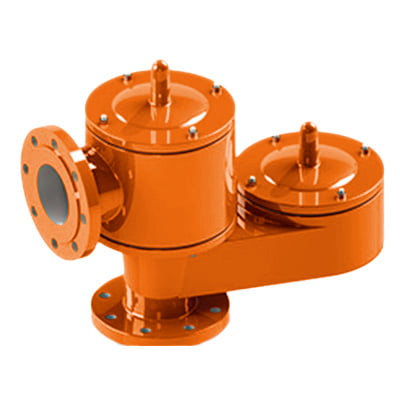Để kích thước đúng một van thở, hãy làm theo các bước sau:
Bước 1. Xác định thông số kỹ thuật của bể
- Đo đường kính bể và chiều cao.
- Xác định vị trí xe tăng và các điều kiện môi trường mà nó sẽ được tiếp xúc.
- Thu thập Bảng dữ liệu an toàn vật liệu (MSDS) cho phương tiện được lưu trữ trong bể, bao gồm:
*Điểm flash phương tiện
*Điểm sôi phương tiện
*Nhiệt tiềm ẩn của hóa hơi
*Khối lượng phân tử tương đối của hơi.
Bước 2. Tính tốc độ dòng chảy tối đa
Thiết lập tốc độ lấp đầy tối đa của bể (tính bằng mét khối mỗi giờ).
Thiết lập tốc độ làm trống tối đa của bể (tính bằng mét khối mỗi giờ).
Bước 3. Đặt các yêu cầu áp suất và chân không
*Xác định áp suất bên trong (tính bằng mbar) rằng van phải giải phóng.
*Xác định áp suất chân không đặt (tính bằng mbar) mà van phải xử lý.
*Xem xét nhiệt độ đã đặt và chỉ định liệu loại lỗ thông hơi sẽ là đường ống hay khí quyển.
Bước 4. Chọn kích thước van
*Dựa trên tốc độ dòng chảy cần thiết và đặt áp lực, sử dụng các tính toán thích hợp để xác định kích thước van. Sử dụng các tiêu chuẩn như API 2000 hoặc ISO 28300 cho các hướng dẫn kích thước chính xác. Nhiều nhà sản xuất cung cấp phần mềm định cỡ hoặc biểu đồ để hỗ trợ chọn kích thước van chính xác.
*Kích thước van có thể nằm trong khoảng từ 2 đến 12 (50 đến 300 mm), tùy thuộc vào các yêu cầu ứng dụng và tính toán dòng chảy.
Bước 5. Tài liệu và các tính năng bổ sung
*Choose the valve material based on the media’s compatibility and environmental conditions. Options include aluminum, ductile iron, stainless steel, carbon steel, and various alloys.
*Xem xét các tính năng bổ sung như lớp phủ bảo vệ, cảm biến báo động hoặc thiết kế đặc biệt (ví dụ: các bộ khởi động ngọn lửa, cơ chế được nạp hoặc trọng lượng lò xo) khi cần thiết cho các ứng dụng cụ thể.
Bước 6. Sử dụng hỗ trợ nhà sản xuất
Nếu kích thước không rõ ràng, nhiều nhà sản xuất cung cấp dịch vụ kích thước van để cung cấp hiệu suất van tối ưu và thông số kỹ thuật hiệu quả về chi phí. Chúng tôi cung cấp dịch vụ định cỡ và tính toán phù hợp với các yêu cầu cụ thể của khách hàng.
Bằng cách làm theo các bước này, bạn có thể đảm bảo rằng van thở có kích thước chính xác cho ứng dụng của bạn, cung cấp bảo vệ hiệu quả chống lại áp suất quá mức và điều kiện chân không trong các bể chứa của bạn.


Van thở và van giảm áp PRV
Chúng ta đều biết việc lựa chọn loại van phù hợp là quan trọng để đảm bảo an toàn và hiệu quả cho [...]
tháng 8
Quy trình kiểm tra van thở
Trong hệ thống bồn chứa công nghiệp, van thở là bộ phận quan trọng đảm bảo cho […]
tháng 8
3 bước đơn giản để nhanh chóng chọn đúng van thở
YeeValve là một bộ phận chuyên biệt của THINKTANK sản xuất van thở. Chúng tôi cung cấp dịch vụ tư vấn miễn phí […]
tháng 8
Dịch vụ & Hỗ trợ Kỹ thuật
1. Hỗ trợ kỹ thuật Yee Valve cung cấp hướng dẫn chuyên môn về việc lựa chọn, lắp đặt và bảo trì van. Khách hàng […]
Có thể
Danh sách kiểm tra đơn hàng
Khi bạn đặt hàng với Yee Valve, đây là các bước bạn nên làm theo [...]
Có thể
Làm thế nào để định cỡ van thở?
Để xác định kích thước chính xác của van thở, hãy làm theo các bước sau: Bước 1. Xác định thông số kỹ thuật của bể Đo [...]
Có thể